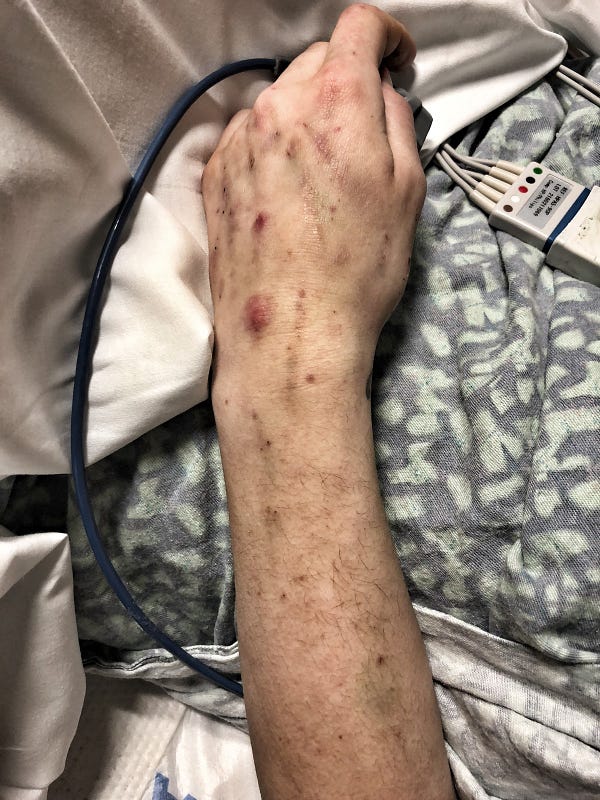One of the most shocking and saddest stories of our times is the opioid epidemic exploding across the country, ravaging cities, small towns and suburbs alike. As an emergency room physician, I am reminded everyday of the grip that opiates have on our society. I see an opiate overdose everyday. These are not the typical drug addicts depicted in movies, but people of all races and socioeconomic backgrounds. As a physician watching the epidemic unfold, I have found little cause for optimism.
In 2015 alone, there were 39,166 opiate related deaths. In 2016 that figure rose 64% to 53,332 deaths. Resulting in more deaths than motor vehicle accidents in 2016 (40,200), Gun violence in 2016 (38,440), and AIDS at the height of the epidemic . Emergency physicians are on the front lines of the opiate epidemic. In many communities, similar to the one in which I work, an overdose from opiates is as typical as chest pain. Patients arrive unconscious, with pinpoint pupils, breathing so slowly that their lips and hands have turned blue. They are often covered in vomit and near death. These are the lucky ones, considering the many thousands who are found dead by a friend or family member; cold, pale and stiff, often with a needle in their arm, never able to make it to the hospital to receive an antidote.
Current treatments fall short of progress.

The current mainstay of opiate addiction treatment is, ironically, opiates themselves. Methadone, which is most commonly prescribed for opiate dependence, killed more people than any other prescription opiate over the last 10 years. Methadone accounts for only two percent of painkiller prescriptions in the United States, but the drug is behind more than thirty percent of prescription painkiller overdose deaths, according to the Centers for Disease Control and Prevention.
Methadone helps keep people from injecting heroin, but it holds patients in the grips of opiate addiction. As strong as any other opiate, including heroin, Methadone is hardly a solution to the vast public health problem of ongoing opiate addiction.
Kratom is helping thousands get clean.
Kratom, on the other hand, is not a narcotic or an opiate. Many people using it state they have been in treatment many times and Kratom was the first thing that ever helped then get completely off all opiates. Patients would tell me how it fought cravings and made heroin withdrawals tolerable. One patient told me that it had saved her life. She has used Kratom daily to stay off of heroin for six months, heroin-free for the first time in eight years.

Another patient talked about how his addiction had caused him to lose his job, wife, and kids. He began to cry when discussing Kratom. This treatment had allowed him to get clean and stay that way. He is now working and rebuilding a relationship with his two little girls.
If all of this is true, Kratom would be a godsend to our struggling families and communities across the country. But what is Kratom? Research shows that it contains the naturally-occurring compounds mitragynine and 7-hydroxymitragynine. These partially bind opiate receptors, mimicking the effects of opiates including pain relief. Because Kratom acts similarly to opiates, users can substitute it without suffering the debilitating withdrawals. However, unlike opiates, it does not cause deadly respiratory depression, the cause of so many opioid overdoses and deaths.
In November of 2017, the FDA issued a public statement warning the public about using Kratom. Thirty-six deaths were reported related to Kratom, and the report cautioned the public about a new and deadly drug. However, what was left unmentioned was that these deaths also involved other dangerous drugs and lethal substances, including alcohol, methamphetamine, and cocaine, among others. Dying with Kratom in your system is not the same as dying as a result of taking Kratom. To date, there has never been a death attributed solely to Kratom use.
Why would federal agencies try to ban a substance that could fight an epidemic that killed over 50,000 people last year? Watching my community wither in the wake of a medical epidemic, and seeing how a natural, unpatentable plant is saving people brings me hope. At the same time, I am dismayed at a profit-driven industry bent on maintaining their hold on treatment options.






